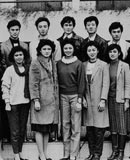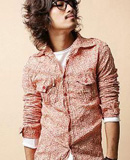不支持Flash
|
晒晒英语专业考研10大院校真题之对外经贸题(2)
Part Two Cloze (30 points)
Complete the text by choosing one word from the box below for each blank marked 1 to 15. (2 points each)
because fail yes Finally also
For Thus tradition that for
it problem not In such
Science as a source of trustworthy knowledge
Why turn to research and the procedures of science to understand the process and effects of mass communication? Are there __1__ other valid sources of trustworthy knowledge? The answer, of course, is __2__; people over the centuries have used many other sources to answer their questions. But each has its advantages and limitations.
For example, __3__ centuries people have found answers to important questions in religion, because it provides revelations from the supernatural. That seems like a reliable source, and for many kinds of questions, __4__ is. However, for something as complex and technical as modern mass media, religion might not provide particularly detailed or helpful information.
Trustworthy knowledge can __5__ be gained from interpretations by authorities. __6__ ancient times, those were such individuals as oracles, priests, philosophers, and kings. Today, they might be prominent business leaders, politicians, educators, and other distinguished people. Contemporary society seems to have an abundance of __7__ people instantly ready to provide others with their interpretations and pronouncements about the influences of mass communication. The __8__ is that these sources are not consistent, and one authority or critic often contradicts another of equal distinction. __9__ that reason, their interpretations have limitations.
A. Almost every appeal imaginable has been used in advertising.
B. Theoretically, both direct and indirect appeals can be effective.
C. Instead it attempts to manipulate the consumer by indirect appeals.
D. The visual and verbal content of advertising has changed considerably over time.
E. Advertisers are innovative because they have always kept in mind the needs of the public.
F. In order to be effective, an advertisement must appeal to its audience and reflect shared values.
G. The goal is, of course, to get the public to associate the corporation with the "selfless" ad and lovely images.
H. Various specialists in an agency work as a team to develop the advertisement tailored to the needs of the particular client.
I. The advertising industry places a high premium on creativity in finding new images that will appeal to the public.
J. For the campaigns the advertising agency's creative department holds a series of brainstorming sessions discussing ideas.
K. Indeed, some advertising content is direct and makes rational appeals, mentioning characteristics of the product, its relative advantages, and price.
L. Coca-Cola's successful "It's the Real Thing" advertisements show happy, fun-loving, youthful people drinking Coke with upbeat music playing in the background - without saying anything about taste, nutritional value, or price.
The content of advertising
To accomplish their ends, advertisers must make a persuasive appeal. Sometimes that appeal is simple and descriptive; sometimes it is subtle and sophisticated. Communication scholars James W. Carey says that advertising is persuasive - and thus acts as a form of social control - mainly by providing information. _ 1 A General Tire commercial that features babies, for example, talks about the durability of the tire and its role in keeping the family safe.
Much advertising, however, has little to do with direct information or rational appeals. _______2 ____________________________________________________ Research in 1992 on Americans’ favorite commercials indicated that those with fantasy scenes, such as the ads for the California Raisins or Kibbles 'n Bits dog food, are more popular than those featuring celebrities. Economic historian David Potter maintains, "Advertising appeals primarily to the desires, the wants - cultivated or natural - of the individual, and it sometimes offers as its goal a power to command the envy of others by outstripping them in the consumption of goods and services." If this is true, advertising may try to get you to buy a product not because of its advantages or because of your existing needs, but because of a need or desire that the advertisement itself tries to create.
Potter's analysis has much merit. _________ 3____________________________________________ Some ads have traded on prestige; others have used fear. Some have promised glamour and the good life. Some have embraced fantasy, and others have been firmly fixed in reality. To make these appeals, advertisers associate products, verbally or visually, with other images, symbols, and values that are likely to attract consumers. For example, advertising for the auto rental firm Avis appealed to the love for the underdog when it promised, "We try harder." Historically, another kind of dog - the trustworthy family dog - was used by RCA Victor, an early manufacturer of the record player that advertised its Victrola with the slogan "His Master's Voice" and a picture of a dog listening to recorded music. The starched but debonair look of “the man in the Arrow Shirt” provides a model for the well-dressed man. Elegant, tastefully designed advertisements for Cadillacs convey an image of quality and excellence. 4
5 Even the sometimes prosaic area of outdoor or billboard advertising has been on the lookout for striking, appealing ads. In 1992, for example, that industry's Creative Challenge contest sponsored by the Gannett Outdoor Group honored an ad showing a mighty dam holding back a waterfall. Above the dam appeared a single word: "Huggies." Said the New York Times, "This unexpectedly imaginative way of advertising one of the most mundane products [disposable diapers] has won a hefty prize in a contest intended to persuade agencies that creativity in outdoor ads is no oxymoronic concept." The winners of the $10,000 prize were three employees of the advertising agency Ogilvy & Mather; the big winner, naturally, was the advertiser itself- Kimberly-Clark, producer of Huggies.
Not all advertising focuses on a specific product, such as diapers. A form called institutional advertising is much less direct. For example, a firm that makes paper and other forest products presents a television ad or a colorful full-page magazine ad describing the virtues of a beautiful, well-managed forest. The advertisement shows cute animals but says nothing about its specific product, providing only the firm's name. 6
7 In the last hundred years, styles have included the ornate and highly decorative soap and cosmetic ads of the 1890s, the clean lines of the art deco designs of the 1920s and 1930s, and the psychedelic poster like ads of the 1960s and early 1970s. More recently, the clean, orderly, Swiss Gothic look of the 1980s yielded in the 1990s to more traditional and formal design, possibly in response to an economic recession and a serious public mood. It is, says design expert Roy Paul Nelson, all a matter of coordinating art and typography with content.
These changes reflect the efforts of creative professionals and entrepreneurs to fashion effective messages. _________________________8_____________________________Advertising that works is therefore an index of popular culture. That was recognized as far back as 1917, when writer Norman Douglas claimed, “You can tell the ideals of a nation by its advertisements.” Thus, changes in advertising over the years have been closely tied to changes in American society as a whole.
特别说明:由于各方面情况的不断调整与变化,新浪网所提供的所有考试信息仅供参考,敬请考生以权威部门公布的正式信息为准。





